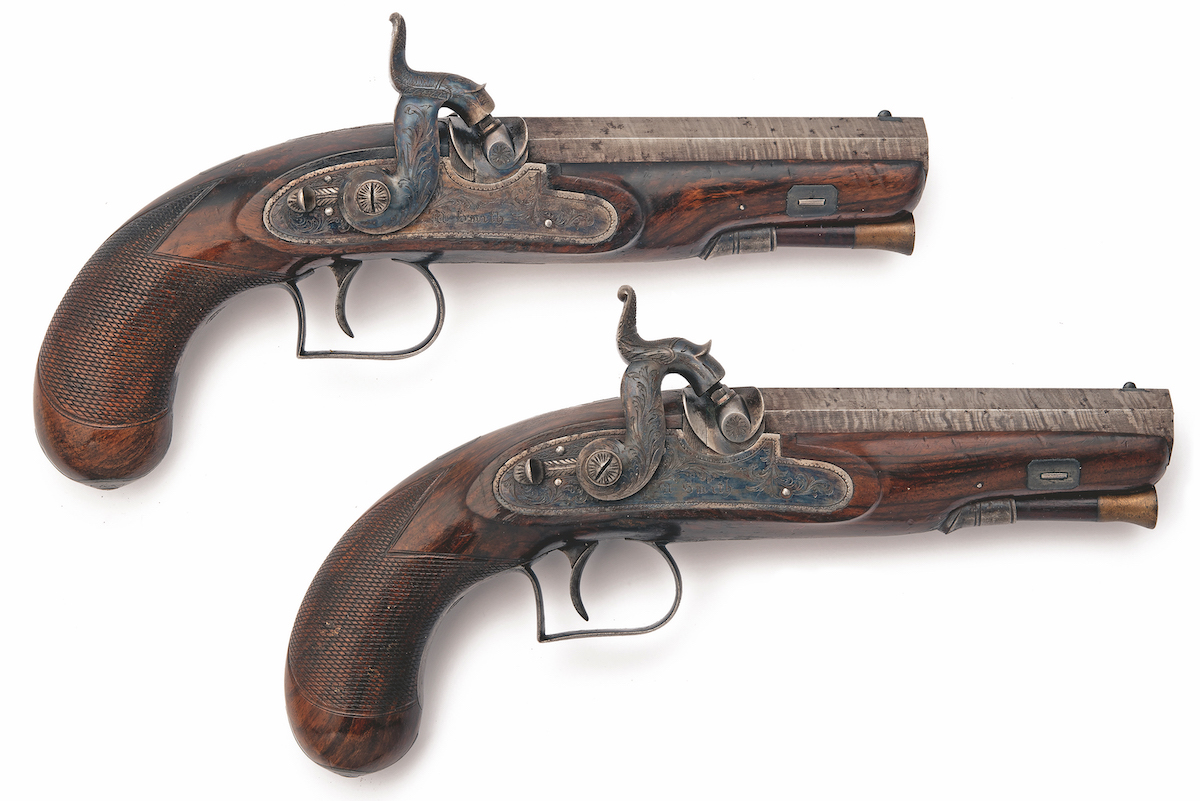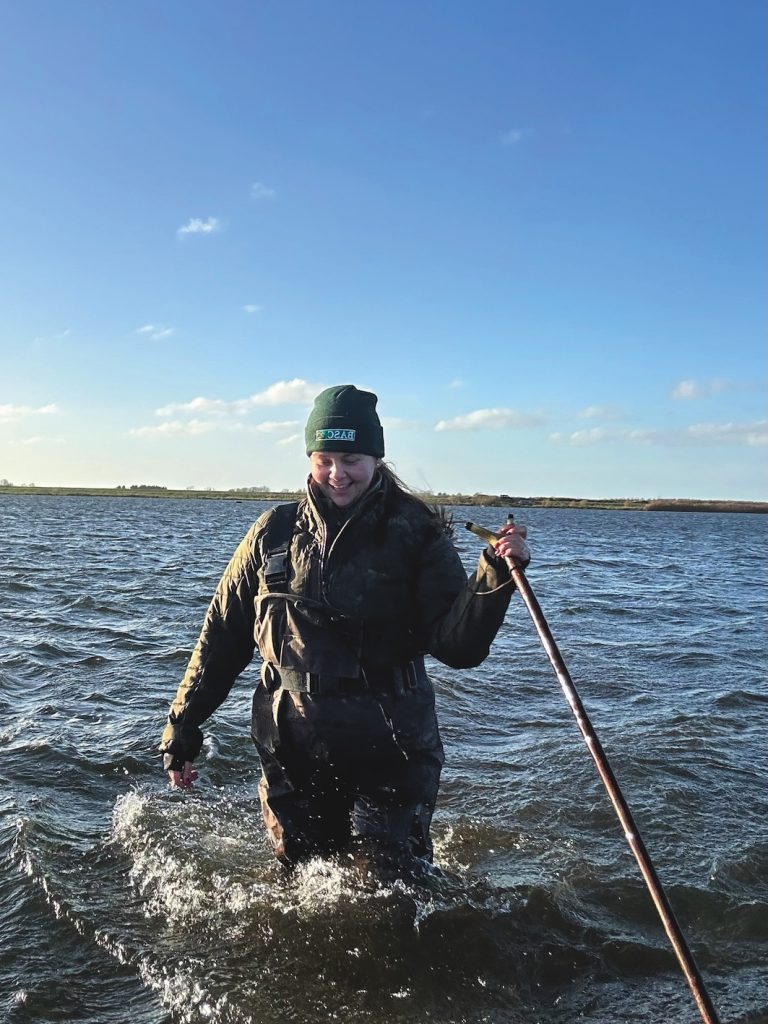Win CENS ProFlex DX5 earplugs worth £1,149 – enter here
A case for Constable Corbett
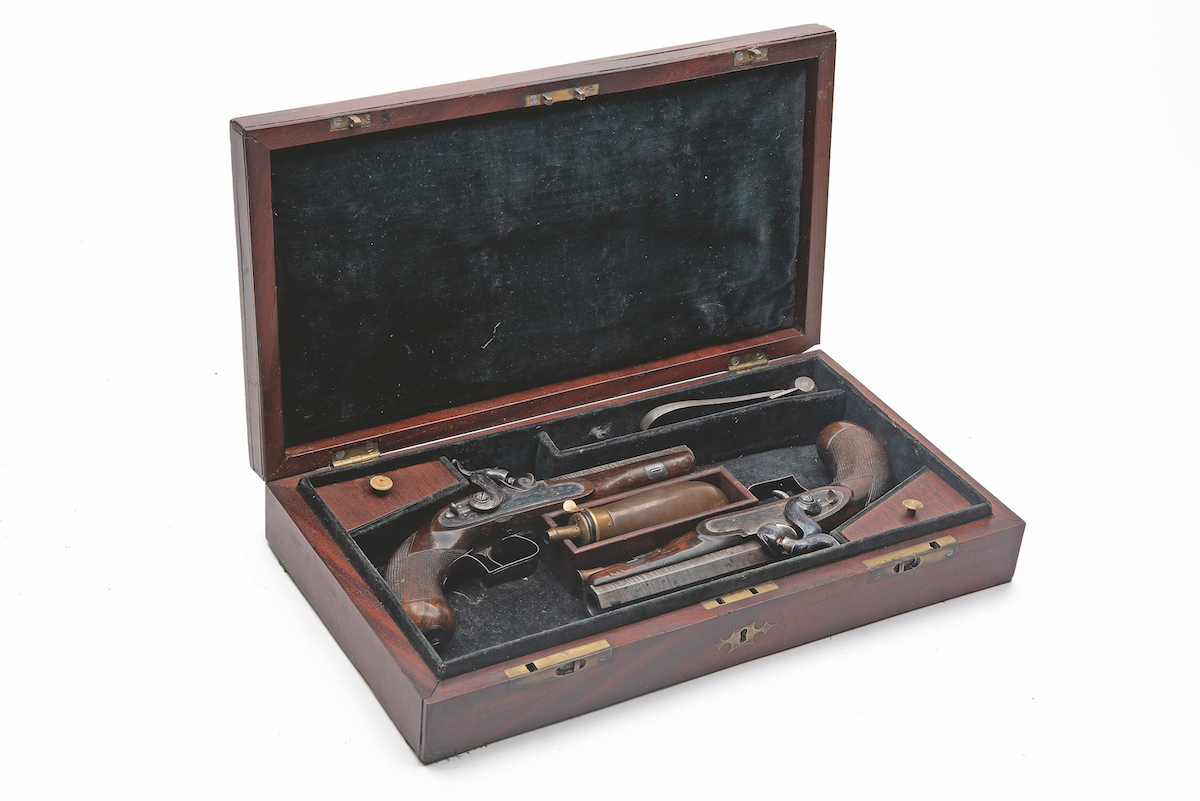
When cataloguing some items for auction, a fair amount of detective work is required.
Take these pistols pictured here. They are signed ‘M Smith’ and cased, but the case appears to be for a much longer-barrelled pair. These guns are of the so-called ‘heavy overcoat type’, a style much favoured by the constabulary and the coastguard for that matter but are of much better commercial quality than is usually encountered.
The barrels are also marked to the ‘Public Office’, suggesting municipal use. The lid handle escutcheon gives more information in that the enclosed pistols were presented to a Mr William Corbett for his services as ‘Constable’ from October 1839 to October 1840.
The internet and its reach is a valuable tool in our work nowadays, and often a search on various ancestry sites will yield results, but on this occasion William Corbett proved elusive, so more detection was needed.
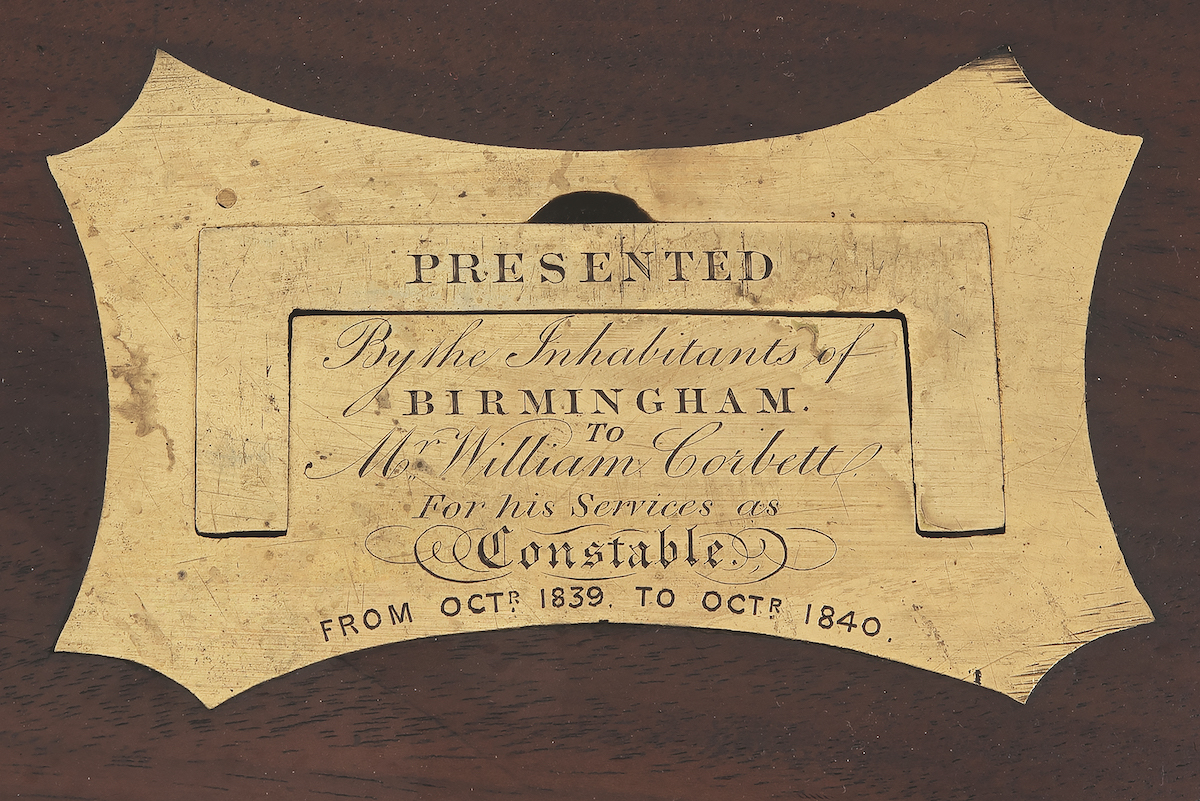
The pistols were presented to Mr William Corbett
Location
The Public Office mentioned on the barrels was a municipal building on Moor Street in Birmingham, England, built between 1805 and 1807. It was the first important administrative building in Birmingham and remained the principal local government centre until the 1880s, when the much larger council house was constructed. The police force was in its infancy back then, and this early force used the Public Office as their base. The building was demolished in 1911 to make way for a railway goods station, so another dead end in our investigations.
Michael Smith, gun and pistol maker, traded from various addresses in and around Steelhouse Lane, Birmingham, between 1807 to 1837, then with his business partner Charles James Smith (believed to be his son) until 1842. The dates appear correct for our man but records do not exist, and none of M Smith’s weapons ever appear to have been serial numbered, so this is inconclusive.
In a strange way though, it does give an indication of why the pistols appear to be in a case designed originally for another pair. If Smith was a comparatively low-volume producer, but happened to be in the vicinity of the Public Office, there is a reasonable assumption that when this pair of pistols needed to be cased for subsequent presentation, this was the only case Smith had available. Obviously this can’t be proved, but it does seem a likely scenario.
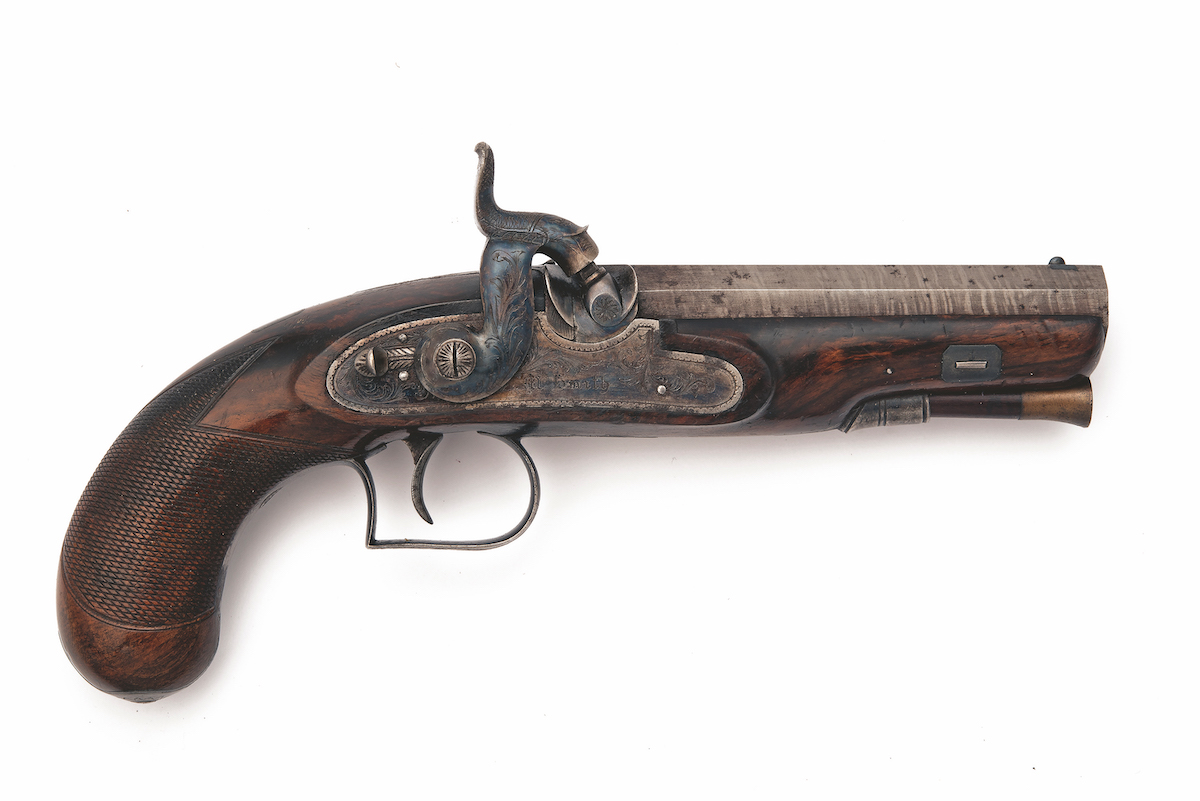
These types of guns were favoured by the constabulary and the coastguard
Clue
Sadly, Mr Corbett remains untraced, but the dates listed on the escutcheon tie in with an interesting period of Birmingham policing, which gives us another major clue. Following the rather brutal suppression of the Bull Ring Riots in July 1839 by London Police sent to aid the existing 80 assorted parish constables, street watchers and watchmen (a woefully inadequate group responsible for policing a population in excess of 180,000 residents), the manager of the Birmingham branch of the Bank of England and the mayor, who were both seriously concerned about the Chartist rioters, decided that it was high time a proper police force was set up.
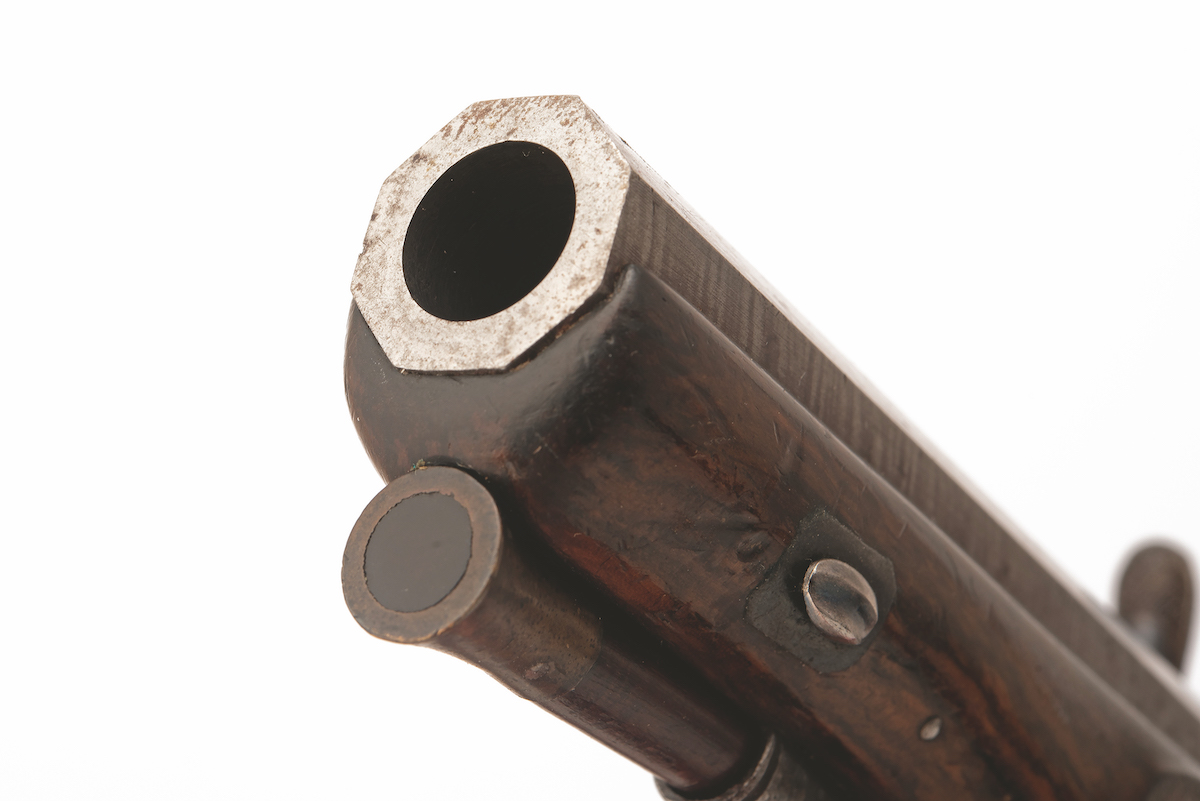
If any reader knows more about Constable William Corbett, I would love to hear from them.
Related Articles
Get the latest news delivered direct to your door
Subscribe to Shooting Times & Country
Discover the ultimate companion for field sports enthusiasts with Shooting Times & Country Magazine, the UK’s leading weekly publication that has been at the forefront of shooting culture since 1882. Subscribers gain access to expert tips, comprehensive gear reviews, seasonal advice and a vibrant community of like-minded shooters.
Save on shop price when you subscribe with weekly issues featuring in-depth articles on gundog training, exclusive member offers and access to the digital back issue library. A Shooting Times & Country subscription is more than a magazine, don’t just read about the countryside; immerse yourself in its most authoritative and engaging publication.






